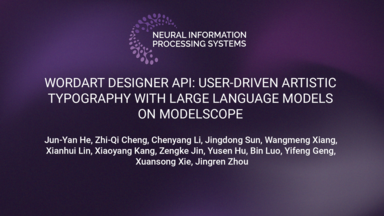Unleashing the Autoconversion Rates Forecasting: Evidential Regression from Satellite Data
Dec 15, 2023
Speakers
Maria Carolina Novitasari
Sprecher:in · 0 Follower:innen
Johannes Quaas
Sprecher:in · 0 Follower:innen
Miguel R. D. Rodrigues
Sprecher:in · 0 Follower:innen
About
High-resolution simulations such as the ICOsahedral Non-hydrostatic Large-Eddy Model (ICON-LEM) can be used to study the interactions between aerosols, clouds, and precipitation processes that currently represent the largest source of uncertainty involved in climate change projections. However, due to significant computational costs, it can only be employed for a limited period and area. While machine learning mitigates this, model uncertainties may affect reliability. To address this, we developed a neural network (NN) model powered with evidential learning to assess the data and model uncertainties. Our study focuses on estimating the rate at which small droplets (cloud droplets) collide and coalesce to become larger droplets (raindrops) – autoconversion rates – as the key process in the precipitation formation, crucial to better understanding cloud responses to anthropogenic aerosols. The results show that the model performs reasonably well, with the inclusion of both aleatoric and epistemic uncertainty estimation, which improves the credibility of the model and provides useful insights for future improvement.High-resolution simulations such as the ICOsahedral Non-hydrostatic Large-Eddy Model (ICON-LEM) can be used to study the interactions between aerosols, clouds, and precipitation processes that currently represent the largest source of uncertainty involved in climate change projections. However, due to significant computational costs, it can only be employed for a limited period and area. While machine learning mitigates this, model uncertainties may affect reliability. To address this, we develo…
Organizer
NeurIPS 2023
Konto · 645 Follower:innen
Like the format? Trust SlidesLive to capture your next event!
Professional recording and live streaming, delivered globally.
Sharing
Recommended Videos
Presentations on similar topic, category or speaker
Modular A new tech stack for nest gen Al research
Später ansehen
Ewigspeicher-Fortschrittswert: 0 = 0.0%
LogSpecT: Feasible Graph Learning Model from Stationary Signals with Recovery Guarantees
Später ansehen
Ewigspeicher-Fortschrittswert: 0 = 0.0%
The Artificial Intelligence Risk Management Framework
Später ansehen
Ewigspeicher-Fortschrittswert: 0 = 0.0%
Similarity-based cooperative equilibrium
Später ansehen
Ewigspeicher-Fortschrittswert: 0 = 0.0%
Counting Distinct Elements in the Turnstile Model with Differential Privacy under Continual Observation
Später ansehen
Palak Jain, …
Ewigspeicher-Fortschrittswert: 0 = 0.0%
WordArt Designer API: User-Driven Artistic Typography with Large Language Models on ModelScope
Später ansehen
Jun-Yan He, …
Ewigspeicher-Fortschrittswert: 0 = 0.0%





